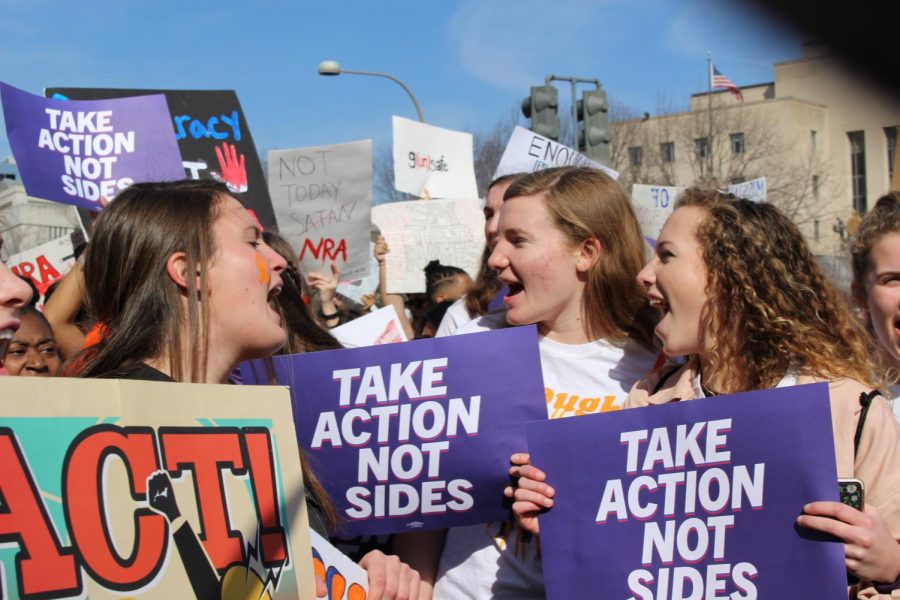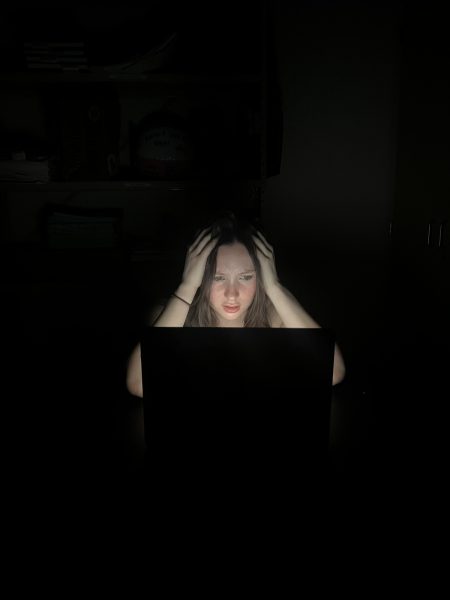A year after Parkland
Juniors Darsey Trudo, Edie Lamantia and Ellie Lamantia shout during 2019’s walkout against gun violence and march down Pennsylvania Avenue. Trudo was one of four juniors who planned the school’s participation in the walkout.
The House of Representatives’ Judiciary Committee held its first hearing on gun violence in nearly a decade on February 6. The room was filled with student activists, most wearing shirts with “March For Our Lives” printed across the front. Students waited in line for nearly three hours to get into the meeting
Valentine’s Day 2019 marked one year since a gunman opened fire at Marjory Stoneman Douglas High School in Parkland, Fla.. The students of Marjory Stoneman Douglas High School huddled in classrooms, texted their parents goodbye and went through a trauma all too common in America. Flowers were placed on graves instead of in the hands of loved ones, and the color red was no longer reminiscent of love.
The Marjory Stoneman Douglas shooting was one of the highest casualty school shootings in American history. 17 people were killed. Politicians tweeted out their condolences, flags flew at half-mast and news stations streamed footage around the clock. America seemed to be following its typical cycle of gun violence, except for one major difference.
During the six minutes and 20 seconds when the shooting took place, and the evacuation thereafter, there was a change in how shootings were presented to the public. The students at Marjory Stoneman Douglas High School filmed themselves in their classrooms hiding under desks and listening to the sound of gunfire. The videos went viral, moving from Snapchat to CNN. After students were evacuated they took their story to the press. They did not allow what to happened to them to be reworded, or spun or twisted to fit an agenda. They spoke out through social media, through town halls and through speeches on the front steps of Congress. Emma Gonzalez and David Hogg became names known across the country, the figureheads of a movement that would reshape the conversation around gun violence in America.
March For Our Lives became an internationally recognized organization. Students walked out of school on two separate occasions. There were marches against gun violence on six continents. The NRA was losing money and sponsors left and right. Gun sense government officials were voted into office. Bump stocks were banned. The HR8 bill, which proposed universal, bipartisan background checks, was introduced to Congress. But amidst all the progress being made, some say it isn’t enough; they’re right.
There is still a very long way to go. According to Everytown Research, 98 percent of Americans support universal background checks. But HR8 is the only universal background check bill in recent history. The bill is facing heavy opposition from Republican representatives, despite their constituents supporting the bill.
The will of the American people is being silenced by a very small percent of the country.
No matter how you do the math, there is no reason that while 98 percent of Americans support universal background checks, only about 50 percent of our elected representatives vote to enact them into law, according to a record kept by NPR.
At Washington-Lee, interest in gun violence prevention has decreased significantly since last year and the March For Our Lives. The Generals Against Gun Violence club’s attendance is down significantly. In a movement that falls on the shoulders of students, students have to show up.
Living so close to the nation’s capital gives Washington-Lee students a special advantage in all of this. Protests, sit-ins and marches are so much more accessible, but it falls on students to actually participate and bring attention to these issues. Posting online about how much you care is not worth much if you are unwilling to have meaningful conversations in real life, and it certainly isn’t enough to make the changes that need to be made. Activism is appearing to become a trend, a photo-op. It should not be.
Activism saves lives. Protesting for common sense gun reform saves lives. But if people are finding themselves becoming more focused on getting a good picture for Instagram, they need to step back and reevaluate their motives. There’s nothing wrong with posting about social issues, or posting about protests. It brings attention to the cause, and it is a good way to get more people involved. But it should not be the focus of people’s activism. People should focus on what they’re hearing from speakers, focus on what they’re feeling as they listen. Focus on the fear that they feel when they think about a shooter walking into their school. Focus on anger, focus on hope, focus on anything and everything they feel, and channel that into change.
Changing the country is not an overnight endeavor. It isn’t a situation where someone goes to one march and then they’ve done their part. They have to keep showing up, keep spreading information, keep getting others involved. This movement starts with all of us. It’s our job to carry it forwards.













